Fátima, a journey to the altar of the world

The Shrine at Fátima is one of the most important landmarks in the Marian worship, drawing pilgrims from all over the world.
The location of the Shrine of Fátima, at Cova da Iria, had until 1917 been an unknown place in the municipality of Ourém, in the parish of Fátima. That year, a religious event changed its history and importance for ever, when three little shepherds, Jacinta, her brother Francisco and their cousin Lúcia, witnessed successive apparitions of Our Lady of the Rosary. Initially looked at with suspicion by the Church, albeit cherished by the people, the phenomenon was not acknowledged by the Bishop of Leiria until 1930. From then onwards, the development of the village boomed, leading to Fátima being given town status, in 1977, and city status in 1997.
The world renown of the Shrine increased during the papacy of John Paul II, a confessed devotee of Our Lady of Fátima, who travelled there in 1982 to give thanks for having survived an assassination attempt the year before. In 2000, on his third visit to the site, he announced the beatification of Jacinta and Francisco, to whom the Vatican attributed the miracle of a cure.
The first apparition occurred on 13 May, followed by others on the same day of the ensuing months until October, and that is the day of the main celebrations in Fátima. One of the most important events is the Candle Procession, on the evening of 12 May, when thousands of candles held by the faithful filling the grand Shrine plaza lend a magic atmosphere of communion and religious devotion to this place. It is as important as the Farewell Procession on the 13th.
But every month, especially on the 12th and 13th, thousands of pilgrims come to Fátima guided by their faith. They set out from different parts of the country, many of them making the journey on foot, following rural lanes and tracks. In order to facilitate this movement, a set of four Fátima Ways – the Tagus Way, the Northern Way, the Nazaré Way and the Coastal Way - have been signposted and can easily be followed using the markers on the ground, even by those with little knowledge of the region.
Not even unbelievers can remain indifferent when confronted by the Shrine’s grandiosity, spirituality and symbolism.
As you enter the Prayer Area, at one end you will see the Basilica of Our Lady of the Rosary of Fátima, with its tall 65-metre tower. In the centre is the Monument to the Sacred Heart of Jesus and, on one side, the Chapel of Apparitions, exactly where Our Lady asked the little shepherds to build a chapel.
At the opposite end, the Most Holy Trinity Church – Lesser Basilica, inaugurated in 2007, is a modern piece of architecture, without intermediate supports and with a capacity for about 8,700 people. The design is by the Greek architect Alexandros Tombazis, with contributions by other artists, such as the Portuguese Álvaro Siza Vieira and Pedro Calapez. Outside, there is a Tall Cross in bronze by the German Robert Schad.
In 2017, during the centenary of the apparitions, the religious celebrations on 12 and 13 May were attended by His Holiness Pope Francisco.
Besides the Shrine, you can visit in the area the Museum of Sacred Art and Ethnology, the Wax Museum, the 1917 Fátima Museum and the Animated Nativity Scene and Village of Bethlehem.
Aljustrel, where the little shepherds lived, is about 2km south. To recreate the story, you also need to go to Loca do Anjo and Valinhos, other sites associated with the apparitions.
To get to know the region, we suggest a route passing through Leiria, along the coast between the beaches of São Pedro de Moel and Nazaré and via two monuments classified as World Heritage, the Monasteries of Batalha and Alcobaça.


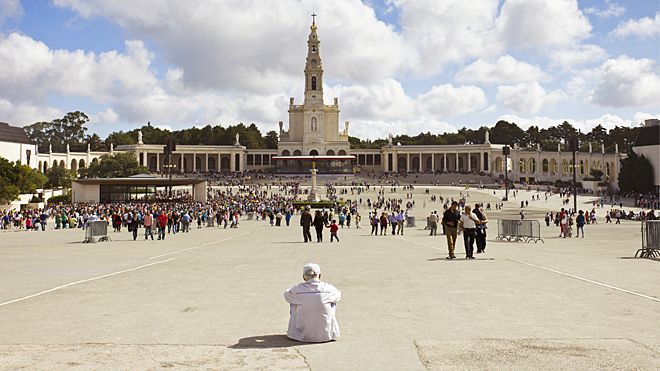





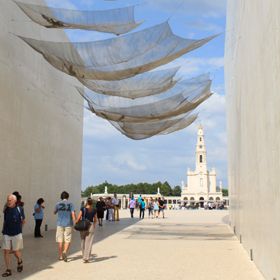
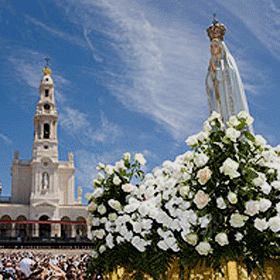

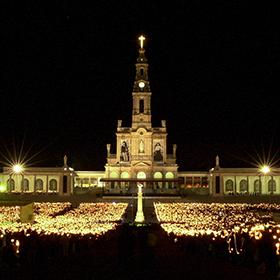
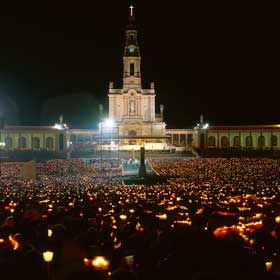
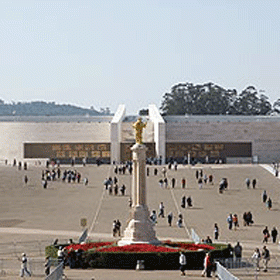




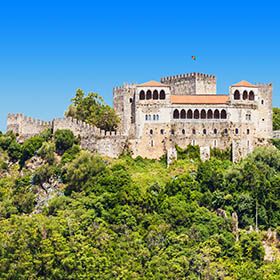


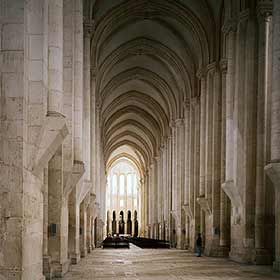
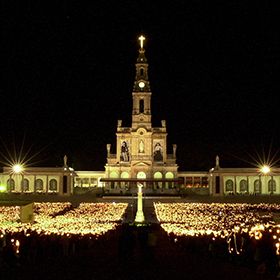

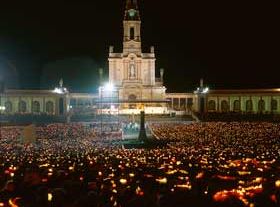
 Explore
Explore 
 Remember and Share
Remember and Share 


